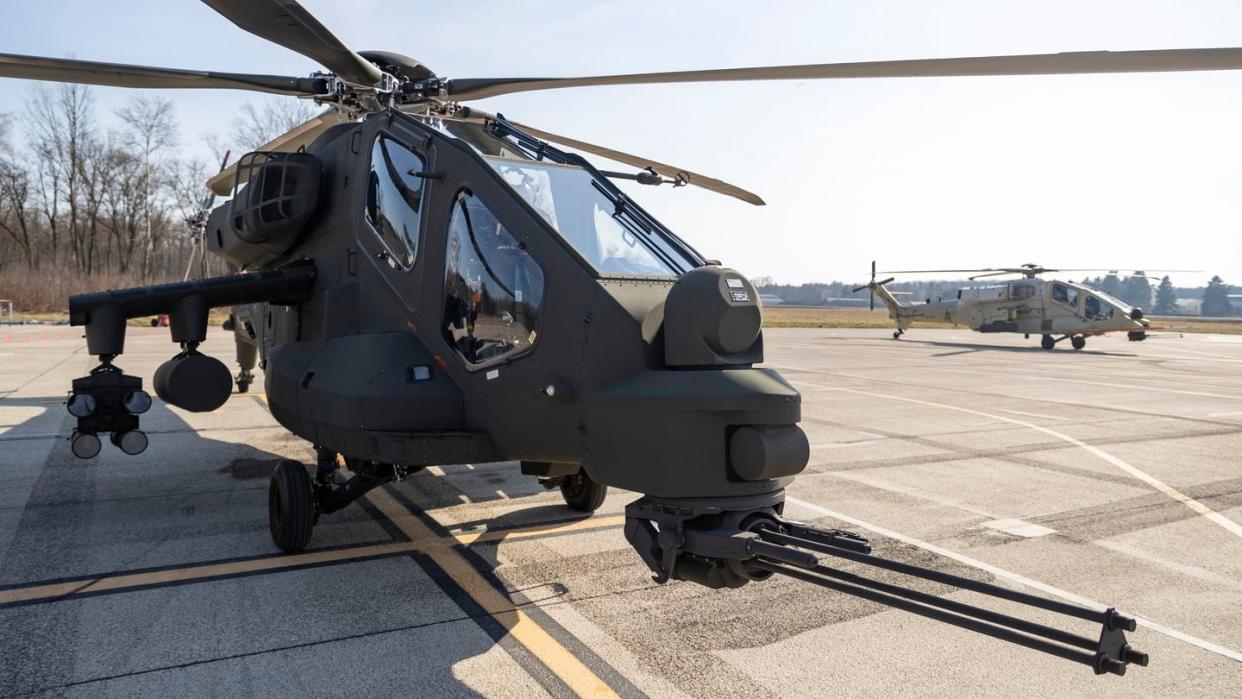Leonardo seeks global firms to build, tweak its new attack helicopter

ROME — Italy’s Leonardo is seeking industrial partners around the world to get on board its new AW249 attack helicopter as it flies two prototypes, readies two more and brings the platform to the Eurosatory trade show in Paris.
Bigger and faster than the aging Italian army AW129 Mangusta it is set to replace, and the only new attack helicopter now being developed in the West, the AW249 will be able to control unmanned aerial vehicles using large screens and helmet displays inspired by the F-35 combat jet.
“Because of the open architecture and our plan to keep it in service for at least 30 years, we are open to industrial collaboration to allow countries to become partners in the development of specific configurations, customizing equipment systems and localizing production for larger numbers,” a company spokesman told Defense News before Eurosatory.
Potential customers getting their industries involved could hail from Eastern Europe, the Middle East and Latin America, said the spokesman.
The plan recalls how Leonardo, then known as Finmeccanica, licensed the use of the baseline design of the AW129 to Turkey, which beefed up the helicopter and later sold its renamed T-129 to Nigeria and the Philippines.
Industry eyes Ukraine war to sharpen proposals for NATO helo fleet
But the spokesman said Leonardo’s approach was very different this time.
“We are not telling governments to take a baseline and develop their own, we are inviting customers to join us from an industrial perspective,” he said.
Weighing in at 8.3 tonnes, the new AW249 is nearly double the 4.35 tonne maximum take-off weight of its predecessor while its top speed of 155 knots (178 miles per hour) outstrips the 126 knots of the AW129.
“What we have kept is the agility, the maneuverability, while adding capabilities,” said the spokesman.
Armaments include guided and unguided 70mm rockets, air-to-air infrared guided missiles and air-to-ground radio frequency or fiberoptic guided missiles, while the AW249 pilot will be able to task UAVs, control their payload and view images they send.
Discussions on allowing the heliopter to control loitering munitions are underway with the Italian Army, which will be the launch customer for the AW249 with first deliveries in 2027.
Getting in step with fifth-generation technology, the helicopter will feature a 20-inch display for the pilot and co-pilot, with the choice of putting up video and data on the screen or on the helmet display.
Leonardo officials said pilots will be able to put a map up in their visor, but out of vision so it enters the pilot’s visor display when the pilot turns their head.
Swapping data between screen and helmet also applies to sensor fusion data, which is built using sensors including infra-red imaging, radar, LiDAR, or Light Detection and Ranging radar, a low light camera and satellite terrain images.
The platform is nearing readiness after Italian defense and Air Force officials became seriously interested in the coaxial rotor technology used on Lockheed Martin’s Defiant-X. That enthusiasm has now waned since the Defiant-X lost out in the US Army’s Future Long Range Assault Aircraft program (FLRAA) program in 2022, and then saw its next hope for adoption, the U.S. Future Attack Reconnaissance Aircraft program, cancelled.
That, according to Leonardo officials, vindicates the firm’s decision to stick with conventional designs like the AW249, while adding new capabilities.
“The U.S. decision reinforces our road map,” said the spokesman.
“Whatever industry decides to develop to meet national requirements that involves different architecture, the cancellation of FARA is moving it far to the right,” he said.

